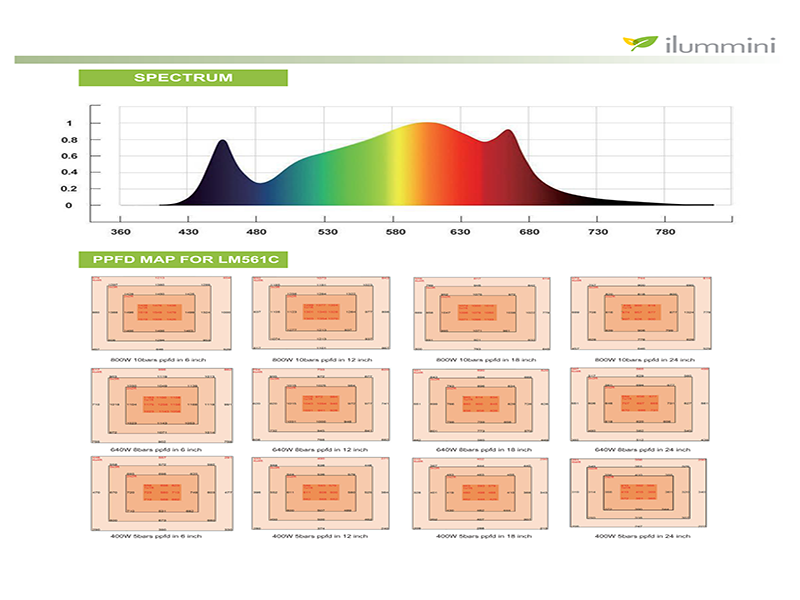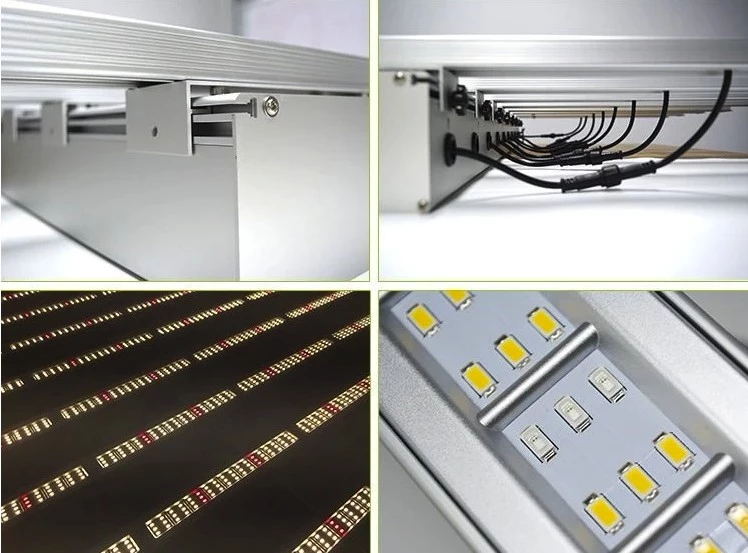
Why do LED Grow Lights Stand Out from the Crowd?
Light environment is one of the important physical environmental factors indispensable for plant growth and development. Controlling plant morphogenesis through light quality regulation is an important technology in the field of facility cultivation.

Full-spectrum plant lamps contain wavelengths from 400 to 420 nm, helping to form anthocyanins and resist elongation of the foliage. The wavelength is 450-460nm, which can thicken the stems and leaves, accelerate the development of the plants, and regulate the opening of the pores. The wavelength of 550nm promotes the growth of oxygen and helps the tissue to better store nutrients. The wavelength of 580 nm promotes growth in the roots and in the early stage of germination.
The wavelength of 650 ~ 660nm, promote the growth of the plant as a whole, especially in the flowering and fruiting stages, increase the growth rate (flowering 20 days earlier, 30 days early harvest), also increase the number of results by 25% to 35%, and reduce the deformity The incidence.
The absorption rate of 720~1000nm is low, which stimulates cell elongation and affects flowering and seed germination.
The light required for plant photosynthesis has a wavelength of about 400-700 nm, of which 400-500 nm (blue) light and 610-720 nm (red) contribute the most to photosynthesis.

When the plant light is used to fill the plant, the height of the blade is generally about 0.5-1 meters, and the continuous irradiation for 12-16 hours per day can completely replace the sunlight.
Solve the lack of sunshine in the greenhouse in winter, promote the chlorophyll, anthocyanin and carotene needed in plant photosynthesis, so that fruits and vegetables can be harvested 20% earlier, increase the yield of 3 to 50%, and increase the sweetness of fruits and vegetables. Reduce pests and diseases.
LED plant growth lamps have low power, but high efficiency. LED plant growth lamps can emit specific red and blue light required by plants, which is why LED plant growth lamps have a power of several watts more than tens of watts or even hundreds of watts. Well, another reason is that the traditional sodium lamp spectrum lacks blue light, and the mercury lamp and the energy-saving lamp spectrum lack red light, so the traditional lamp fill light effect is much worse than the LED lamp, and the traditional lamp needs to save more than 90% of the electric energy. The operating costs are greatly reduced.
Full-spectrum plant lamps developed according to the wavelength range of sunlight required for plant growth and the required illumination, can be bred and grown under non-plant growth conditions, and can accelerate crop breeding and shorten crop growth cycle And can avoid the occurrence of pests and diseases and deformed fruit.
Know more details:http://www.luminlighting.com/Products/iLUMMINI400WMulti-ba.html
Top articles
- Signify Continue to Develop Healthy Lighting in the Post-epidemic Era
- The General Trend of HCL Is Visible in the Future
- What Illumination Should I Choose for Different Functional Areas?
- Exciting for HongKong International Lighting Fair
- The National Landscape Lighting Has Opened the Festival Mode
- Why do LED Grow Lights Stand Out from the Crowd?
- Light Show----Blessing for the 70th Anniversary of the Motherland
- Custom Spectrum LED Grow Light Is in Full Swing
Latest articles
Your browsing history
